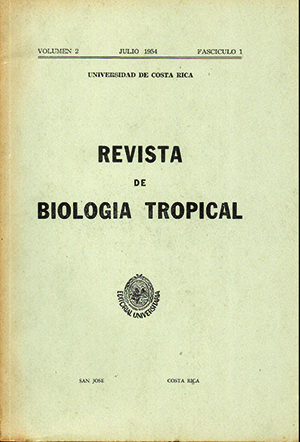Abstract
Microscopic examination of the feces of 200 children was carried out using direct examination, concentration and staining with Mallory's hematoxylin. The purpose of the study was to approach more closely the actual incidence of intestinal parasites in Costa Rican children, and at the same time, to compare the results obtained with the different methods used. Positive results were found in 99 % of the samples. No correlation with age was found, nor with the location of children in rural or urban areas. Careful examination: of fresh material gave satisfactory results; the use of eosin was particularly valuable in the finding of protozoa, especially of cysts. In the case of worms, data obtained through direct examination were very slightly smaller than those obtained through concentration; and in the case of Trichuris trichiura the proportion was greater in direct examination than in concentration. Concentration by Faust's flotation method yield@d considerably higher data than direct examination in the case of Endamaeba histolytica, E. coli and Iodamaeba bütschlii, and slightly higher for Giardia lamblia. Preparations stained with Mayllory's hematoxylin showed no advantage over fresh material with regard to worms, but proved exceedingly helpful in the identification of protozoa and, in our study, particularly of Endolimax nana and Endamaeba histolytica. It is worth stressing that, although concentration by Faust's method is helpful in the search for cysts of Endamaeba histolytica, it is often impossible to identify as such small forms whose internal structure can not be clearly made out even when stained with Lugors solution. It becomes necessary then, in order to arrive at the correct diagnosis, to stain with hematoxylin. By this means it was possible to raise to 14% the incidence of this parasite, which had been found in 2.5% of fresh samples and in 7% of concentrated samples.Comments
Downloads
Download data is not yet available.






